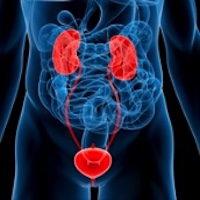The impact of tumor invasion to muscularis mucosaevascular plexus on patient outcome in pT1 bladder urothelial carcinoma

Accepted: June 22, 2020
All claims expressed in this article are solely those of the authors and do not necessarily represent those of their affiliated organizations, or those of the publisher, the editors and the reviewers. Any product that may be evaluated in this article or claim that may be made by its manufacturer is not guaranteed or endorsed by the publisher.
Authors
Objectives: T1 bladder cancer has a wide range of tumor behavior and lamina propria invasion depth has a high potential risk of disease progression. To evaluate the patient outcome according to the tumor invasion to the muscularis mucosae-vascular plexus (MM-VP) in pT1 bladder urothelial carcinoma (BUC).
Materials and methods: This study is a retrospective analysis of patients consecutively recorded from 2007 to 2013. A total of 93 patients with a history of primary pT1 BUC and complete follow-up were included. We used a pathological substaging system according to the tumor invasion regarding the MM-VP: pT1a (invasion above MM-VP) and pT1b (MM-VP invasion). We evaluated recurrence-free survival (RFS), progression- free survival (PFS), disease-specific-survival (DSS) based on this sub-staging system.
Results: Pathological evaluation regarding the MM-VP invasion revealed 53 patients (57%) as pT1a BUC and 40 patients (43%) as pT1b BUC. The mean follow-up was 78.8 months. During the follow-up period; 60 patients (64.5%) had tumor recurrences, 32 patients (34.4%) had progression to invasive disease, 18 patients (19.4 %) died during follow-up related to the BUC. In 29 (54.7%) of pT1a and in 31(77.5%) of pT1b tumors, the recurrent disease was recorded during the followup period (p = 0.023). DSS rates at 5 years for pT1a and pT1b were 80.2% and 60.8%, respectively. PFS, RFS, and DSS rates were similar for pT1a/pT1b and did not reach statistical significance (p > 0.05).
Conclusions: Sub-staging of pT1 BUC according to the MM-VP invasion showed a limited impact on the outcome in our patient cohort. However, the presence of pT1b disease caused a significantly higher rate of recurrence.
How to Cite
PAGEPress has chosen to apply the Creative Commons Attribution NonCommercial 4.0 International License (CC BY-NC 4.0) to all manuscripts to be published.

 https://doi.org/10.4081/aiua.2020.3.239
https://doi.org/10.4081/aiua.2020.3.239




